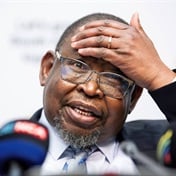
The South African black middle class has more than trebled over the past 12 years, and this year it stands at close to 6 million people, according to University of Cape Town marketing professor John Simpson.
“The black middle class is keeping the economy alive ... There has been an explosion of the black middle class,” he said during a fresh-produce conference this month.
“As marketers, you need to understand the black middle class intimately,” Simpson said.
“Black middle class people don’t see an end to the journey. They don’t say ‘I have made it and I am going to sit back and cool my heels’. They don’t at all ... They are driven to be successful ... They have broken out of the era of poverty.”
The factors driving the increase in the black middle class included greater access to credit, improved education levels, BEE and improved economic growth until recently, he said.
The poor had also been helped out of poverty by the state’s provision of housing, water, electricity and social grants, he said.
“The top end of the black middle class, where people are very wealthy, is doing incredibly well,” Simpson said.
Since 2004, the number of black middle class members with a tertiary qualification has grown by more than 2 million.
Internet usage has shot up from 10% in 2004 to 67% last year, while cellphone ownership moved from 36% in 2004 to 97% last year.
Two-thirds of the black middle class have a Facebook profile, and three-quarters of those Facebook users log on at least once a day.
A key value of the black middle class was that “we don’t have extended families, we have families”, which was also known as “ubuntu tax” or “black tax”, Simpson said.
“For many marketers, family members are now major competitors for a share of the wallet,” he added.
The black middle class have high aspirations, and they want to own a car and avoid using minibus taxis.
Black middle class car ownership is up by 2 million since 2004.
Despite rumours to the contrary, management of debt appears mostly to be “under control”.
The mall has become the middle class’ playground, with lots of browsing and research happening on the internet before shopping takes place.
“Middle class people only really shop in the shopping malls. The mall is the middle class fish bowl,” Simpson said.
There is increasing evidence of growing financial literacy and more of the black middle class are planning for the future rather than living for today.
There is also a drive among the middle class to leave behind a legacy, especially regarding children’s education and investments.
Simpson said that about 70% of the black middle class sent their children to former Model C or private schools, while 78% were not happy with the standard of education at government schools.
“I don’t want them to suffer like we did,” is the common refrain that Simpson picked up during his research.
A key point of tension within the black middle class is that between living in the township versus the suburbs.
“The line between townships and the suburbs is becoming blurred ... There is a slowdown in the move from the townships to the suburbs,” Simpson said.
Still, 28% live in the townships, but typically in “burbs in the township”.
“Township developments make a middle class lifestyle more possible,” he added.
The wealthy areas in the townships get names such as Diepkloof Expensive and Beverly Hills.
Another trend is a dramatic growth in DStv viewership, with the percentage of DStv watched increasing from 9% in 2004 to 79% last year.
As with any middle class, the black middle class is brand conscious.
There is much distain for “brands from the past”.
“My past is defined by Lucky Star – we had it day and night, and I can’t eat it any more,” was the example Simpson used to illustrate this point.
Turning to confidence, he said that the black middle class was on a highly motivated journey.
His research showed that 68% of members of the black middle class were more optimistic than they were five years ago.
In comparison, 30% of whites are more optimistic than they were five years ago, but 40% are less confident.
“I have the confidence that I will be able to achieve my goals. There’s light at the end of my tunnel,” Simpson explained.
In contrast to the black middle class, the white middle class has shrunk from 2.8 million adults in 2004 to 2.6 million adults last year.
Simpson attributed this decline to a lot of young South Africans having left the country, especially Jewish South Africans, which has seen its population drop by 75% since 2004.
However, the growth in the black middle class would slow down due to the lack of quality education, he said.
“Education gives you choice. Education and income go hand in hand,” Simpson said.




 Publications
Publications
 Partners
Partners










